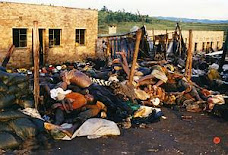
The continent is more than 30m sq. km, but this is not reflected correctly in standard Mercator maps. Europe, for instance, is the world's second-smallest continent by surface area, covering about 10,180,000 square kilometres, with approximately 50 countries (of which 28 belong to the European Union).

Africa, a mega-sized continent with 54 or 55 countries, depending oninterpretation (if we were to compare size in square meters, the UK would end up as number 31 on the list) is all too often thought of as a humanitarian desert of disasters and conflicts, with famine, malnutrition and diseases on top of it all.
However, good news is that reality actually is quite the opposite.
Although journalism continues to portray a continent of unending horrors, there are actually only 15 African countries involved in war, or experiencing post-war conflict and tension.
In countries like South Sudan, where a UN base harbouring civilians wasattacked yesterday, or the Central African Republic, where sectarian violence has thrown the already ravaged country further into chaos, the violence is so harsh that the countries make the news for good reason.
The success stories, unfortunately, remain overshadowed.
So here’s a list for you: poverty rates throughout the continent have been falling steadily and much faster than previously thought, the death rate of children under five years of age is dropping, and the continent is among the world’s most rapidly growing economic regions. "Hiding the Real Africa", a report published in 2011, or “Yes Africa Can – Success Stories from a Dynamic Continent” by the World Bank, are both reports that have helped reverse the picture somewhat.
And speaking of MDG’s (Millennium Development Goals), Ghana is set to become the first country in Africa to halve poverty and hunger before 2015, and primary school enrolment in Ethiopia has increased by more than 500 percent since 1994. Tanzania has achieved MDG 2 ahead of time and made the most progress in Africa on primary education over the last 10 years: it has doubled net enrolment in primary school from 49 percent to 96 percent from 1999 to 2009, and increased the primary completion rate from 55 percent to 100 percent.
Globally in 2012, 15 of the 20 countries which made the greatest progress on the MDGs were from Africa. Malaria mortality rates in children in Africa were reducedby an estimated 54%, most countries’ elections pass peacefully - and mobile technology has been a game changer for Africa. Youth, whom the United Nations defines as those aged 15 to 24, are seizing the momentum and rewriting society’s rules while tweeting and hanging out on Facebook.
Humanitarian aid for conflict areas remains crucial, and aid agencies rarely have the luxury of bringing good news for the public. But one thing doesn’t exclude the other – while making a donation online, you might just as well tune in to the latest Mbalax, Kuduro, Azonto or Coupé Decalé –tunes, and keep in mind that the conflicts are only a minor part of the continent.








No comments:
Post a Comment
Note: only a member of this blog may post a comment.